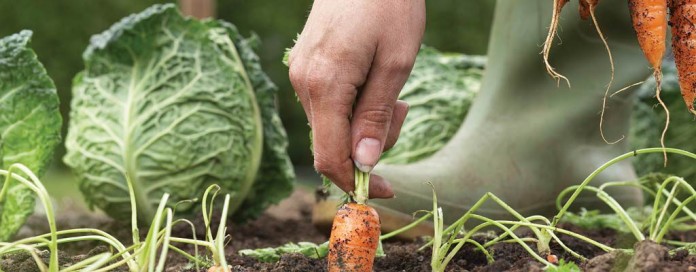Lisa Helm, of Dayton Urban Grown, has had record numbers of plant sales this spring, up 20% from what’s typical for this time of year. Some customers ordered up to $200 worth of plants.
“I think it’s just food security issues,” Helm said. “People saw the run on grocery stores.”
Interest in home gardening exploded this spring during the COVID-19 pandemic. Pam Bennett, state master gardener volunteer program director, said garden centers she’s talked to have been flooded with people who want to grow vegetables this year. Food security is a big piece of it, but, Bennett suggests, that’s not the whole story.
“The No. 1 reason in my mind is, everybody is at home right now,” Bennett said. “What can we do?”
Sustained interest
During the world wars, Americans grew victory gardens as a way to ensure part of their own food supply and as an act of patriotism. During the most recent recession, Bennett said, she saw another spike in gardening interest, as some turned back to growing their own food.
“Usually with victory gardens, when there was a crisis in food, people would grow their own vegetables,” Bennett said. “When that crisis would go down, people would buy at the grocery store.”
But after the last recession, Bennett said, people stayed interested in gardening.
There are a few reasons for this. A local food movement started around the same time as the recession. People wanted to know how their food was being grown, and what pesticides were being used on their food. Some, especially younger generations, were concerned about their carbon footprints. Community gardens grew as a way to combat food insecurity in some areas.
“Interest has remained quite high for a sustained period of time,” Bennett said.
Time
Julialynne Walker, garden manager for Bethany Bronzeville Community Garden, in Columbus, was scheduled to teach a short course on gardening for Ohio State University in March and April this year. The course was moved online after the pandemic became a serious concern in Ohio in early March.
About 50 people joined the course for one or more sessions. Walker has no doubts that the pandemic influenced interest in the course, for several reasons.
“Number one … there was time to build on the interest” with more people working from home, Walker said.
To add to that, Bennett said, some parents are using gardens as an educational project for their children, who are still doing their school work from home. Walker said many parents and grandparents joined her online sessions with their children or grandchildren.
Insecurity
Walker noted that in the last few weeks in particular, people have been concerned about the food system, as farmers face challenges with meat packers and dairy processors. So, some are interested in supplying more of their own food.
“I think there was a certain level of fear and insecurity that this whole process, this experience, has caused people to feel,” Walker said. “I think that gardening provides a sense of comfort, a sense of security.”
As people face layoffs or pay cuts across many industries, some view home gardening as a way to save money.
“There were definitely people in the group who said, ‘I want to be very serious about this because I don’t know what will happen this summer,’” she said.
Bennett believes food insecurity is a big part of the interest, but also that there are other factors at play. She noted that a vegetable garden will save a family about $500-600 per year.
“That’s a lot for some people, so that’s a good thing,” she added.
But gardening can be hard work, and it doesn’t stop when the harvest is done. Bennett said home gardeners also need space and skills to store their vegetables so they can save them for later in the year.
Appreciation
Helm typically offers gardening classes in the spring, which she has moved online for this year. In her classes most years, Helm sees about a third of the people who are interested in starting a garden fizzle out and end up abandoning their gardens after they become overwhelmed with weeds.
“It’s a lot of work,” Helm said.
She noted that, as schools switch to online learning during the pandemic, many parents are saying that they appreciate their children’s teachers more than ever. She expects to see something similar happen with gardens and farmers.
“My prediction is by July, people will really appreciate local farmers,” she said.
Advice
Helm encouraged new gardeners to start small and scale up once they get more experience.
“Don’t bite off more than you can chew … it’s easy to get overwhelmed,” she said.
Bennett suggested that families consider the size of their family, think about what vegetables are their family’s favorites and then pick out four to five things to grow for the first year.
Walker noted that it takes time to learn to garden. She also encouraged participants in her course to plant vegetables that they enjoy eating, and to share seed packets. Some packets have up to 150 seeds, and most home gardeners don’t need that many to start out.
“Just plant a small amount, nourish that well, do it in a way that makes it a pleasant experience for you and enjoy the process,” she said.










